#les and diane
Text








on change
Ursula Le Guin Dragonfly; The Tales from Earthsea / BoJack Horseman (2014-2020); Nice While It Lasted dir. Aaron Long / Eric Jong Becoming Light: Poems New & Selected / Ocean Vuong On Earth We're Briefly Gorgeous / C.G. Jung The Red Book (via @tamsoj) / Charlotte Eriksson Everything Changed When I Forgave Myself / BoJack Horseman (2014-2020); Nice While It Lasted dir. Aaron Long / Rainer Maria Rilke Letters to a Young Poet
#based exclusively on the diane quote#on change#on self#on recovery#on healing#ursula le guin#the tales from earthsea#bojack horseman#raphael bob waksberg#aaron long#bojack finale#nice while it lasted#eric jong#becoming light#ocean vuong#on earth we're briefly gorgeous#cg jung#the red book#charlotte eriksson#everything changed when i forgave myself#rainer maria rilke#letters to a young poet#writing#spilled poetry#spilled thoughts#spilled ink#poem#dark academia#words#dark academia poetry
258 notes
·
View notes
Text
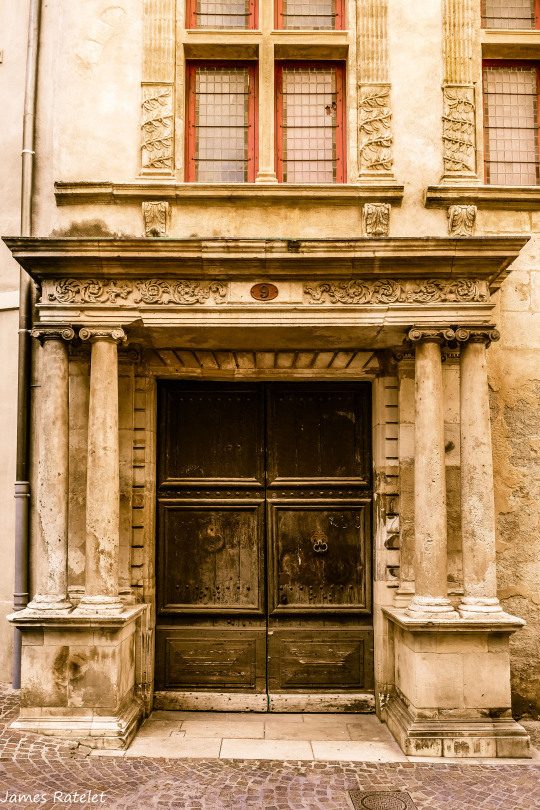
James Ratelet, sur les chemins du Gard, Arènes de Nîmes, Maison Carrée, Tour Magne et Temple de Diane, jardins de la Fontaine, Porte d'AugusteCostières, terroir viticole et activités autour de l'AOC Costières-de-nîmes, Mas des Tourelles, Beaucaire,Abbaye de Saint-Roman, Voie Régordane, Abbaye de Saint-Gilles, Petite Camargue, Scamandre, Gallician, Saint-Laurent-d'Aigouze, Aigues-Mortes, Salins du Midi, à Aigues-Mortes, Pointe de l'Espiguette, le pont du Gard, Uzès, Avignon, Occitanie , France, Europe
#James Ratelet#sur les chemins du Gard#Arènes de Nîmes#Maison Carrée#Tour Magne et Temple de Diane#jardins de la Fontaine#Porte d'AugusteCostières#terroir viticole et activités autour de l'AOC Costières-de-nîmes#Mas des Tourelles#Beaucaire#Abbaye de Saint-Roman#Voie Régordane#Abbaye de Saint-Gilles#Petite Camargue#Scamandre#Gallician#Saint-Laurent-d'Aigouze#Aigues-Mortes#Salins du Midi#à Aigues-Mortes#Pointe de l'Espiguette#le pont du Gard#Uzès#Avignon#Occitanie#France#Europe
85 notes
·
View notes
Text

Diane Kruger by Thierry Le Goues for Vogue España, May 1997
21 notes
·
View notes
Text
The opera Rigoletto is based on Victor Hugo's play Le roi s'amuse.
The character in the play who became the opera's Duke of Mantua is King Francis I of France. (The opera had to change the setting to Mantua and demote the king to a duke because the censors of the era wouldn't allow such a negative portrayal of a king, or a nearly successful attempt to assassinate him, to be shown onstage.)
King Francis I is also the king in the movie Ever After: A Cinderella Story – the father of Prince Henry, the future King Henry II. Obviously, by the time Ever After takes place, his days as the handsome womanizer Hugo's play depicts were behind him.
Ever After's heroine Danielle de Barbarac is a fictional character, but apparently she's loosely inspired by Diane de Poitiers, the real Henry II's beloved mistress. She was known as a highly intelligent woman and as Henry's unofficial advisor as well as his bedmate. The movie just sanitizes the situation and makes it fit the Cinderella story by removing Henry's arranged marriage to Catherine de Medici and having him marry Danielle instead.
And who was Diane de Poitiers's father? Jean de Poitiers, Seigneur de Saint-Vallier. In Hugo's play, he's the character who corresponds to Rigoletto's Monterone.
Of course Victor Hugo had entirely different goals in writing Le roi s'amuse than the screenwriters of Ever After did fort their "realistic fairy tale." It's hard to imagine the hot-tempered yet ultimately good-hearted old king in Ever After as having once been the charming yet ruthless young rake from Hugo's play and Verdi's opera, and whether either of them resembles the real Francis I or not I don't know.
I just think it's funny that this connection exists between Rigoletto and Ever After, of all things.
(P.S. I wonder what King Francis would think of the fact that not only does Verdi's opera demote a character who was meant to be him to a mere duke, but that so many modern productions of that opera have demoted him even further, portraying him as a Mafia boss, a movie studio mogul, a Frank Sinatra-style singer, etc.)
@leporellian
#opera#rigoletto#le roi s'amuse#victor hugo#ever after: a cinderella story#cinderella#francis i#henry ii#diane de poitiers#french history
60 notes
·
View notes
Text

Photo par Diane Arbus.
🇨🇵 Sur la photo centrale c'est Diane Arbus elle même qui a pris place sur les genoux de l'homme.
🇬🇧 On the middle photograph, this is Diane Arbus herself on the man's knees.
#diane arbus#sur le vif#eaux profondes#allure#regard#noir et blanc#couple#sourire#nude portrait#autoportrait#Femme photographe#women photographers
16 notes
·
View notes
Photo

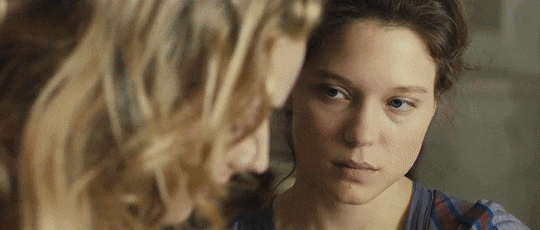




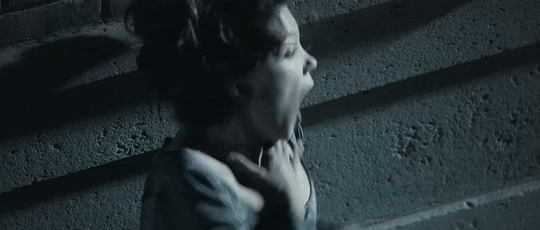

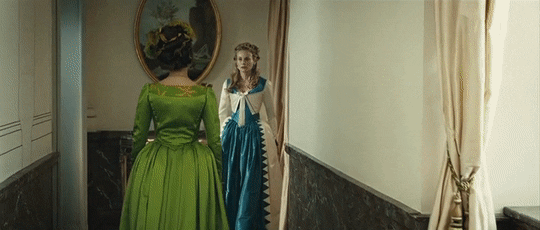
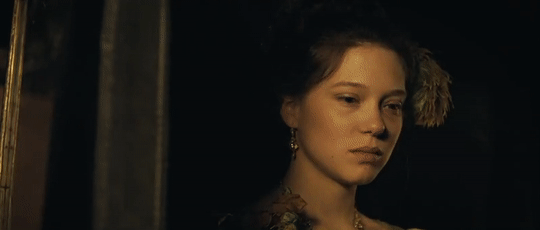
LES ADIEUX À LA REINE (2012)
dir. Benoît Jacquot
In July 1789, the French Revolution is rumbling. Far from the turmoil, at the Château de Versailles, King Louis XVI, Queen Marie-Antoinette and their courtiers keep on living their usual carefree lives. But when the news of the storming of the Bastille reaches them, panic sets in and most of the aristocrats and their servants desert the sinking ship, leaving the Royal Family practically alone. Which is not the case of Sidonie Laborde, the Queen's reader, a young woman, entirely devoted to her mistress; she will not give her up under any circumstances. What Sidonie does not know yet is that these are the last three days she will spend in the company of her beloved Queen...
(link in title)
#lgbt cinema#lesbian cinema#les adieux à la reine#farewell my queen#french cinema#lgbt#lesbian#france#lgbt movie#lesbian movies#french movie#lgbt film#lesbian film#french film#lgbt media#lesbian media#queer cinema#léa seydoux#diane kruger#virginie ledoyen#benoît jacquot#2010s#2012#2010s movies#2010s cinema#2010s films
49 notes
·
View notes
Text
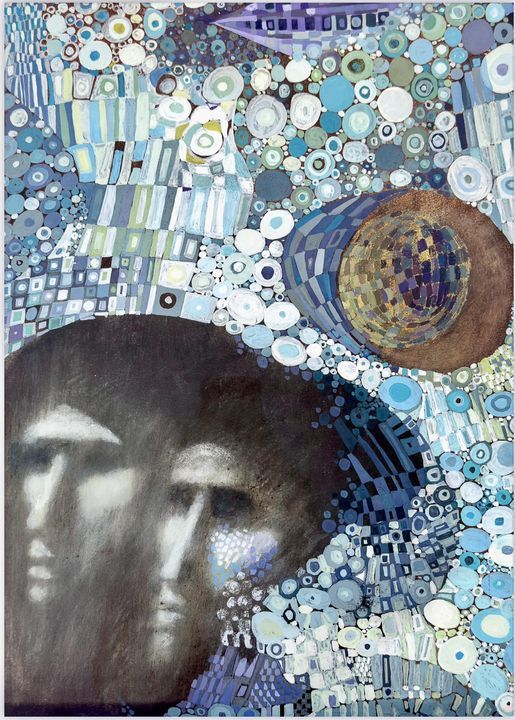
Original Cover Illustration Art
THE LEFT HAND OF DARKNESS
by URSULA K. LE GUIN
Dillon, Leo and Diane Dillon. Original cover illustration art for the first editionof Ursula Le Guin’s The Left Hand of Darkness.
Le Guin’s The Left Hand of Darkness was one of the first examinations of androgyny in science fiction. The ambisexual individuals on the planet of Gethen are a mirror of what an alternate Earth could be, and the novel explores the effect of sex and gender on culture and society.
Artists Leo and Diane Dillon won the Caldecott Medal in 1976 and 1977. Mr. Dillon was the first African-American to receive the medal. The Dillons’ artwork was influenced by African folk art, Japanese block printing, and medieval illumination.
[1969]. 609 by 483mm (24 by 19 inches). Illustration board. Image is 438 by 330 mm (17 ¼ by 13 inches). This is the original acrylic painted cover art by Leo & Diane Dillon, used by publisher Ace Books for its first edition of Ursula Le Guin’s novel The Left Hand of Darkness. Professionally framed with museum glass. Near Fine and in excellent condition.
Provenance: Ace Books gifted the artwork to Le Guin’s editor, Terry Carr, to commemorate the publication success of the book. Owned continuously by the Carr family, the artwork is now offered for sale on behalf of the Carr and Lichtman Estate.
$20,000
Contact: Mark funke, bookseller. [email protected] +1.206.632.1535
#ursula k. le guin#sci fi art#cover art#the left hand of darkness#leo and diane dillon#ace books#sci fi
9 notes
·
View notes
Text
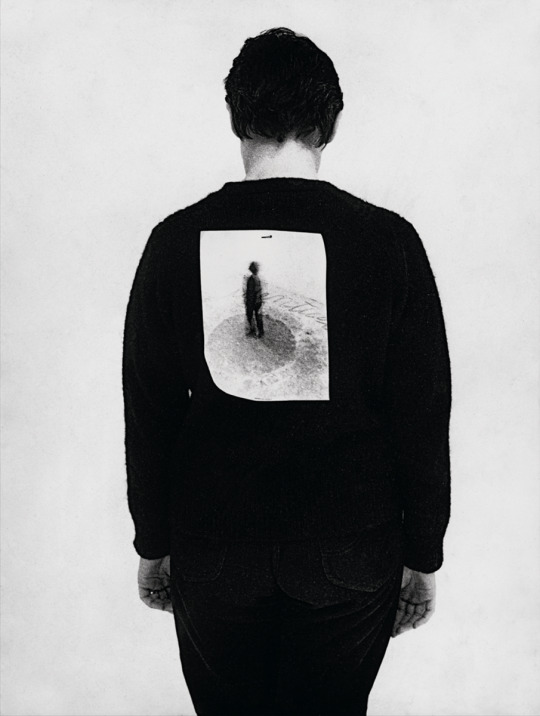
Reversing the Eye. Fotografia, film e video negli anni dell’arte povera, Triennale, Milano, May 16 – September 3, 2023
Curated by Quentin Bajac, Diane Dufour, Giuliano Sergio, and Lorenza Bravetta
In collaboration with Jeu de Paume and LE BAL, Paris
(Image: © Emilio Prini, Introduzione alle statue, 1968)
#art#photography#exhibition#emilio prini#quentin bajac#diane dufour#giuliano sergio#triennale di milano#lorenza bravetta#jeu de paume#le bal#1960s#2020s
19 notes
·
View notes
Text

Diane Givry
91 notes
·
View notes
Photo




Versace f/w 2023 rtw
Creative Director Donatella Versace
Models Gigi Hadid, Diane Chiu, Rachel Marx & Sebastien Ordorica
Art Directors Charles Levai & Kevin Tekinel
Fashion Editor/Stylist Jacob Kjeldgaard
Makeup Artist Pat McGrath
Hair Stylist Guido Palau
Casting Directors Piergiorgio del Moro, Samuel Ellis & Giulia Massullo
Newest Cool on Instagram
#newest cool#newestcool#versace#versace versace versace#Gigi hadid#Rachel marx#diane chiu#Donatello versace#fw 2023#fw23#fw2023#fw 23#fall/winter 2023#automne/hiver#hollywood hills#versace fw23#modest high fashion#suited up#le suit#women suit#versace versace#versace bag#versace heels#versace dress#versace milano#versace sunglasses#gianni versace#versace men#Jacob kjeldgaard#Charles levai
24 notes
·
View notes
Text
Les antiféminismes : analyse d'un discours réactionnaire (Sous la direction de Diane Lamoureux et Francis Dupuis-Déri, 2015)
“Les discours d’une « crise de la masculinité » s’appuient donc sur l’idée que le féminisme, en mettant en mouvement les normes sociales, aurait troublé les repères de la masculinité et conduit à une dévirilisation de la société.
Pour Charles Tenroc, « ce qu’elles veulent, c’est jouer le rôle de l’homme dans la comédie politique et sociale, c’est prendre la place prépondérante de l’homme dans la marche de l’humanité ».
Aux femmes qui pénètrent dans des domaines jusque-là masculins appartient donc la responsabilité du « chaos social », des troubles et des désordres. (…)
Pour contrer le féminisme, rien ne vaut un homme qui deviendra un mari. Mariée, une féministe redevient une femme, et tout rentre dans l’ordre.
Le mariage constitue donc un moyen de contrôle social sur les femmes et une arme pour asseoir le pouvoir des hommes.
Le journaliste utilise ainsi un vocabulaire guerrier puisqu’avec ce « bataillon de maris » il s’agit de « désarmer » les féministes et de « les coucher sur le carreau », donc de leur opposer de la violence physique.
Puisque « le féminisme est dangereux pour la société, il est alors normal d’utiliser des moyens coercitifs pour le contrer ».
Les discours antiféministes ne sont donc pas seulement des diatribes railleuses, mais sont souvent ponctués de rêves de punition. (…)
De plus, l’acharnement autour de Louise Michel, alors que celle-ci ne s’inscrivait pas dans le mouvement féministe, révèle que l’antiféminisme dont elle est l’objet est lié à un antisocialisme virulent dans une société post-Commune de Paris.
Les discours antiféministes qui ont pour cible directe Louise Michel sont aussi contre-révolutionnaires.
Pour comprendre la mise en place des rhétoriques protomasculinistes à la fin du XIXe siècle, il faut donc les associer à un système réactionnaire qui s’oppose à l’ensemble des revendications de progrès social et politique.
Louise Michel, par son engagement révolutionnaire et anarchiste, incarne le désordre : l’antiféminisme s’entrecroise donc avec l’antisocialisme et se nourrit de la peur de la révolution sociale, morale et politique que cette figure personnifie.”
9 notes
·
View notes
Text
Some of the Ace Science Fiction Specials edited by Terry Carr. Cover art by Leo and Diane Dillon.


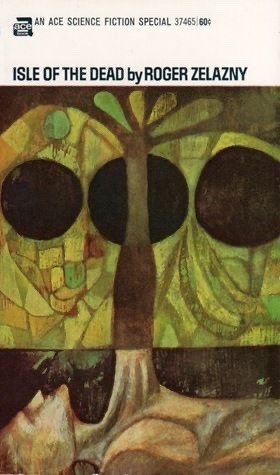
RIGHT OF PASSAGE by Alexei Panshin (1968) Nebula Award Winner; THE DEMON BREED by James H. Schmitz (1968); ISLE OF THE DEAD by Roger Zelazny (1969)



THE LEFT HAND OF DARKNESS by Ursula K. LeGuin (1969) Winner of the Hugo and Nebula Awards; THE PHOENIX AND THE MIRROR by Avram Davidson (1969); PAVANE by Keith Roberts (1969).


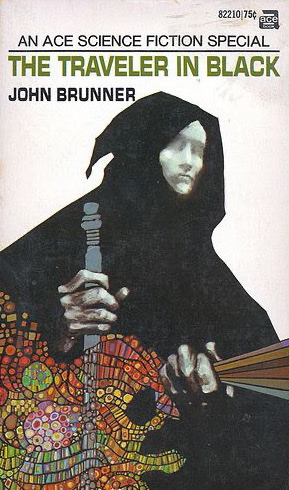
THE BLACK CORRIDOR by Michael Moorcock (1969); NINE HUNDRED GRANDMOTHERS by R. A. Lafferty (1970); THE TRAVELER IN BLACK by John Brunner (1971).
#book cover#roger zelazny#ursula k. le guin#michael moorcock#john brunner#the left hand of darkness#pavane#rite of passage#isle of the dead#book blog#books#books books books#science fiction#nebula award#hugo awards#leo and diane dillon
59 notes
·
View notes
Text

James Ratelet, sur les chemins du Gard, Arènes de Nîmes, Maison Carrée, Tour Magne et Temple de Diane, jardins de la Fontaine, Porte d'AugusteCostières, terroir viticole et activités autour de l'AOC Costières-de-nîmes, Mas des Tourelles, Beaucaire,Abbaye de Saint-Roman, Voie Régordane, Abbaye de Saint-Gilles, Petite Camargue, Scamandre, Gallician, Saint-Laurent-d'Aigouze, Aigues-Mortes, Salins du Midi, à Aigues-Mortes, Pointe de l'Espiguette, le pont du Gard, Uzès, Avignon, Occitanie , France, Europe
#James Ratelet#sur les chemins du Gard#Arènes de Nîmes#Maison Carrée#Tour Magne et Temple de Diane#jardins de la Fontaine#Porte d'AugusteCostières#terroir viticole et activités autour de l'AOC Costières-de-nîmes#Mas des Tourelles#Beaucaire#Abbaye de Saint-Roman#Voie Régordane#Abbaye de Saint-Gilles#Petite Camargue#Scamandre#Gallician#Saint-Laurent-d'Aigouze#Aigues-Mortes#Salins du Midi#à Aigues-Mortes#Pointe de l'Espiguette#le pont du Gard#Uzès#Avignon#Occitanie#France#Europe
27 notes
·
View notes
Text
Anne de Beaujeu
Anne de Beaujeu (Anne de France, 1461-1522)
Unofficial regent of France and duchess of Bourbon

Anne de Beaujeu provides an example of female political authority in a country where the Salic Law prevented women from assuming the crown. She also illustrates the tension between an increasingly centralized monarchy on the one hand and feudal independence on the other, having supported both causes at different times in her life. Probably born in 1461, Anne de Beaujeu was the oldest of the surviving children of Louis XI, king of France, and the one said to resemble him most intellectually and temperamentally. When this king died in 1483 leaving a thirteen-year-old Charles VIII on the throne, Anne and her husband, Pierre de Beaujeu, as his guardians, assumed control. In so doing, they resisted Louis d'Orléans, the next in line to the throne, who wished to be named regent. Louis and his supporters sought help from the estates-general who met in 1484 but who ultimately supported Anne's cause. Referred to as Madame la Grande (Grand Madam), Anne was recognized by the court and by foreign emissaries as the person actually ruling France during the early years of Charles's reign.
In 1488 she and Charles VIII squelched a noble uprising, the Guerre Folle (the Foolish War) led by Louis d'Orléans and Francis II duke of Brittany. Charles then married the new duchess of Brittany, Anne, to ensure the duchy's loyalty to France. Meanwhile Pierre de Beaujeu's two older brothers had died, leaving Pierre with the Bourbon inheritance. Anne and her husband were now the richest and most powerful nobles in France. In 1491, after the loss of one infant and fifteen years of childlessness, Anne gave birth to a daughter, Suzanne. As Charles VIII grew increasingly independent of his older sister, Anne redirected her attention to her own lands and feudal duties, though she remained his advisor while retaining her ties to the court. When Charles died suddenly in 1498 leaving no heirs, Louis d'Orléans became king of France. Neither his previous attacks on the crown nor his well-known personal vices inspired confidence in his subjects, so the support of Anne de Beaujeu and her husband were instrumental in a smooth accession to the throne. Anne agreed to overlook their antagonistic past and did not hinder the annulment Louis immediately requested from her physically disabled sister, Jeanne. In exchange, Louis XII waived the royal rights to the Bourbon inheritance in the case that Anne and Pierre did not have a male heir. Once all this had been established, the Bourbon's relationship with Louis XII and his new queen, Charles's widow Anne de Bretagne, became quite cordial. Anne de Beaujeu no longer held any direct influence, however, over the governance of the French state.
In 1504 or 1505, after the death of her husband and before she arranged a marriage for her daughter, Anne wrote Suzanne a book of lessons, Les Enseignements d'Anne de France, duchesse de Bourbonnois et d'Auvergne, à sa fille Susanne de Bourbon, modeled on the book that Louis IX had written for his daughter, the one her own father had written for Charles, and the writings of Christine de Pizan. Anne's version contains conventional advice on the appropriate behavior for noblewomen. During her unofficial regency, Anne had overseen the education of many young noblewomen at court, including Louise de Savoie, Marguerite d'Autriche, and Diane de Poitiers. The humble feminine figure that emerges from the Enseignements, however, seems at odds with their independent author. More easily recognizable are the anxieties about life as an older widow distant from court. The Enseignements ends with a tale about a noblewoman who bravely sacrifices her only child for the honor of her family and the interests of the king. Suzanne was, in fact, married shortly thereafter to a cousin to protect the integrity of the Bourbon inheritance.
In contrast to the moral of her tale, however, the interests of a noble family and those of the crown did not always overlap. Before she died, Anne witnessed the opposition of two adults whom she had raised from childhood: her son-in-law, the connétable de Bourbon, and Louise de Savoie, mother of Francis I, successor to Louis XII. Louise and her son, suspicious of the wealth and power of the connétable, the Bourbon heir, challenged his inheritance. After losing the domain that Anne had so carefully built up and defended during her lifetime, the connétable, perhaps with Anne's bitter approval, responded by betraying the French king Francis I- the other cause that Anne had defended so staunchly during her brother's reign. Anne died in 1522, before this ultimate betrayal.
Emily Thompson in Encyclopedia of Women in the Renaissance.
#xv#xvi#anne de france#anne de beaujeu#regents#duchesse de bourbon#louis xi#charles viii#pierre de beaujeu#louis xii#françois ii de bretagne#anne de bretagne#la guerre folle#suzanne de bourbon#sainte jeanne de france#louise de savoie#marguerite d'autriche#diane de poitiers#charles iii de bourbon#le connétable de bourbon#françois i#proof that anne approved of this ? i didn't find anything#the connétable's betrayal is a complex story#one can point fingers at françois i and louise de savoie too#emily thompson#encyclopedia of women in the renaissance
16 notes
·
View notes
Text







#diane webber#marguerite empey#pin up model#pin up#vintage#female model#vintage nude#artistic nude#album cover#photoshoot#studio photoshoot#adult model#vinyl girl#vinyl#mambo#les baxter#underwater#jazz#bed time#old records#studio album#dianewebber#album artwork#60s retro#cover girl#sensualphotography#color photography#curvy model#almost nude#long play
18 notes
·
View notes
Text

⚜️XIV⚜️: I am Dieudonné (Ch. I/Pt. VII)
My baptism was one week away. One morning, Philippe and I decided to make our way to the kitchen. I always had a voracious appetite for as long as I could remember. Philippe was a finicky eater. He would only put the finest of delicacies in his mouth. But if the food was good, he could eat as much as I could.
If our mother had known of our near daily sojourns to the kitchen, she would have locked us in our rooms. As royalty, we were fraternizing with commoners too much. How could we not? They were friendly to us. Their children were uninterested in our titles and more into play. On this day, there were few people in the kitchen but there was plenty of food.
Straight away, Philippe headed for the macaroons. I helped myself to the omelettes. While I poked a piece in my mouth, I saw Philippe reaching for his treats. He dropped one and chased it as it rolled under a table. One of the servants noticed him squatting down to reach it.
“Thank you,” he said. “I am Philippe.”
“Who are you talking to,” I asked him.
“A girl,” he said without looking up. I noticed a little hand coming from under the table holding the macaroon he dropped.
A woman gasped and reached under the table and pulled out a little girl. She was as little as Philippe, with a head full of long black curls covering her features.
“Tu es une mauvaise fille,” she said angrily. “Are you stealing food again?”
“No,” she said, tearfully.
“She gave me my macaroon,” Philippe said, his mouth full. He walked over to the girl, and handed her a macaroon. “Here.”
She took it, smiled and ran out of the kitchen. Philippe gave the woman a mean look.
“Come, Philippe,” I said. I could see he was about say something awful.
He slowly turned toward me, still scowling at the woman.
“She is not nice, Louis,” he said, looking at me. I looked at the woman as I took Philippe’s hand. I did not say a word to her but I could see she feared what we might say to our parents. I led my brother away putting the incident out of my mind.
**** **** **** ****
No more than a few days before my baptism, I was playing with Philippe in the hall. Our mother approached us followed by several ladies with 2 girls and boy.
Everyone stopped in front of us and bowed.
“Louis, Philippe,” Mother said sweetly. “This is Gabrielle, Louis and Diane-Françoise. Louis and Diane have come to play with you.”
I did not know what to say but Philippe did.
“Why,” he asked.
Mother seemed a loss for words as several of her ladies tried not to laugh.
“Philippe, be polite to our guests,” she said.
“Why?”
“Yes, Maman,” I said quickly.
She smiled and left us with the little boy and girl as the older girl left with mother and the other ladies.
“I am Louis,” the boy said.
“Me, too,” I said.
“This is my sister,” he said. “Her name is Diane but we call her Françoise because she is named after our mother.”
“She is a girl,” Philippe said.
“I know,” she said. “And you are a boy.”
Philippe stuck his tongue out at her.
“Who is the other girl,” I asked Louis.
“That is my other sister, Gabrielle,” he said. “Papa said Maman is going to have another baby. I hope it is a boy this time.”
“That is a lot of girls,” I said. “Philippe is my only brother.”
“He is little,” Louis said.
Philippe gave him a mean look before pulling Diane’s hair.
“Philippe, stop,” I said. “That was not very nice.”
“No, it was not,” Diane said, hitting Philippe on the arm.
“Françoise,” Louis said. “You cannot hit him. He is a Prince.”
“That is right,” Philippe said, hitting her back.
She hit him again.
“Mine is two,” Louis said, pulling her away.
“So is mine,” I said, holding Philippe back. “They are still babies.”
“I am not a baby,” they said in unison.
“Come,” I said. “We can go play in the garden. We have a puppy out there.”
**** **** **** ****
On the day of my baptism, I entered the chapel with my mother. Philippe was to remain behind in the pew without our governess. As always, Philippe had other ideas. He managed to escape her grasp, and follow me down the aisle to the altar. Our father was waiting for us beside the font. His skin was pallid and his eyes did not seem to have the shine I remembered. He never moved from his position. He smiled at us as we met him and the priest at the altar.
It was intimate ceremony with only important members of the household in attendance. I stood before the altar of the chapel, I knew it was a solemn occasion even as I was too young to understand its meaning. I stood with my parents before the baptismal font as the priest began to speak.
Suddenly, I heard a splash. At first, I thought nothing of it. Then I heard it again and again. I looked down to see Philippe reaching into the font. I gently nudged him to get him to stop. I should have known that would entice him to continue more vigorously. I noticed everyone trying to ignore Philippe. It was a feat that was futile to attempt. My father gently pushed my brother’s hand away, and Philippe put it back. Even our father knew it was best to let Philippe have his way. So as long as he kept quiet, there was no harm done other than a slightly damp priest.
Papa did not say a word nor moved through it all. He just smiled and nodded once it was over. He and Maman exchanged glances while the priest and I exchanged words before mother took our hands and us out of the chapel of Château-Vieux.
The next time I would see my father would be 23 days later upon his deathbed.
**** **** **** ****
It was a quiet morning. By I remember I was playing with Philippe in my room when our governess came in. Her face was stoic.
“Your Highnesses,” she began, her voice trembling. “His Majesty wishes to you both.
“Papa,” Philippe exclaimed excitedly. “I want to see Papa.”
I knew something was wrong. Everyone in the room seemed disheartened. She picked up Philippe and offered her hand to me. I cautiously took it and she led me away to my father’s room.
It was the last moments of his life.
In his room, I could smell the scent of death and feel the burden that was about to put upon me. Though I was only four years old, I knew my presence in the moment gave everyone a feeling of helplessness and hope. When I saw my father, I was frightened at how sallow he was. Maman, Mazarin and Bontemps held vigil by his bedside as we approached.
“Louis,” he said, weakly. “Philippe.”
Our governess put my brother down beside me. I did not dare move closer to my father. I was afraid; he looked like the corpse he was to become.
“Papa,” Philippe said. “You look sleepy.”
“I am,” he whispered, with a faint smile. “I am going to sleep, Philippe. For a very long time. Louis, remember what I say to you. You will make a fine king. I know you will.”
I nodded. I did not know what else to do. I was passed a torch I was not yet able to carry. Suddenly, Papa said something I could not hear, took two labored breaths, then fell silent. Mother gasped as others in the room weeped softly.
“It is a quarter past two,” Bontemps said softly.
With everyone around him, my father slipped away peacefully.
“Why is Papa sleeping, Louis,” Philippe whispered.
“I do not know, Philippe,” I answered softly.
I knew our father was gone forever, but I did not believe it. Even I thought he was sleeping. It would be a while before I realized he had said his dying words to me months earlier at the château. Watch after your brother for me. Take care of Philippe. Looking at my father’s corpse, I said to myself, But who will take care of me, Papa?
Soon after, everyone turned and looked at me.
“Le roi est mort,” Mazarin said. “Vive le roi.”
I was the King of France.
“You are the king now,” Maman said to me.
“I do not want to be king,” I said.
“Your father is dead,” she said. “You must take his place now, Louis.”
“I do not want to,” I said loudly. “I do not want to be king!”
“Louis,” she began.
“No!”
I ran out of the room and down the hall crying. I did not want to be king. I did not know what it meant to be king, much less what it was. When I reached my room, I expected to see my governess, but there was another woman in her place.
“Who are you,” I yelled.
“I am your new governess, Your Majesty,” she said.
“No,” I yelled, pushing her. “Go away!”
I threw myself on my bed and started to cry into the pillows. I cried myself to sleep. I remembered hearing soft whimpering next to me. When I opened my eyes, it was evening and I was dressed in my nightgown. Philippe was lying next to me, his eyes red from crying.
“You scared me,” he said.
“I did not mean to,” I said.
“Why are you sad, Louis,” he asked.
“I do not want to be king but Maman said I am,” I answered.
“You are too short to be king,” he said. “You have to be tall like Papa.”
“I think he is gone, Philippe,” I said.
“When he comes back, you do not have to be king,” he said yawning.
He fell asleep, leaving me to my thoughts. I did not think Papa was coming back to us this time.--The Secret of the House of Bourbon–XIV by Jaynaé Marie Miller. 5-07-2022
#hob official tumblr#france#historical drama#historical fiction#louis xiv#writers of tumblr#history#le petit monsieur#louisxiii#diane francoise#montespan#macaroons#vive le roi#family#the house of bourbon#french history#novels
11 notes
·
View notes